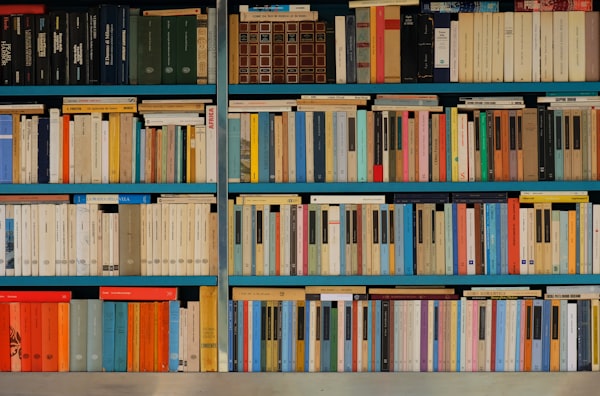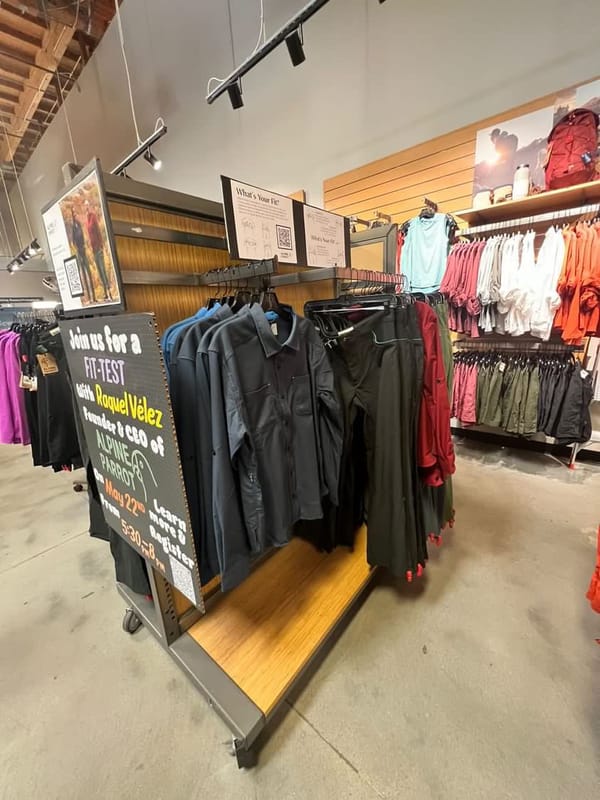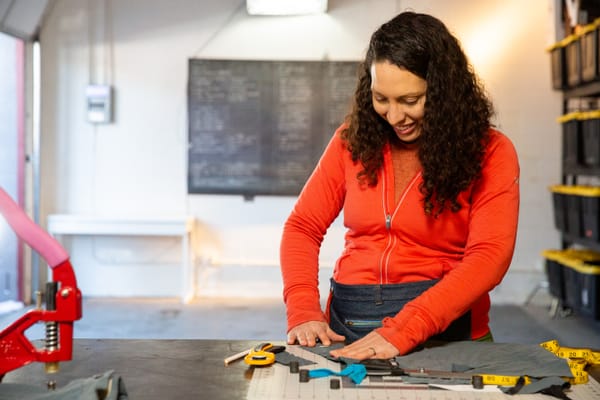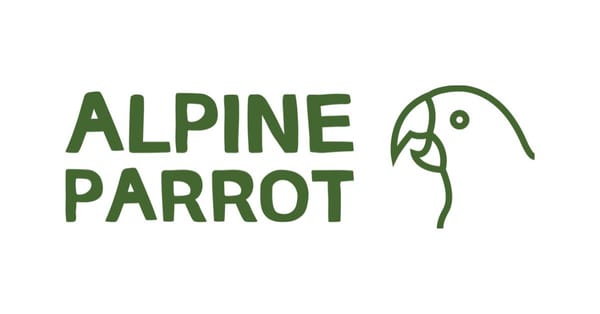Sewing Machines
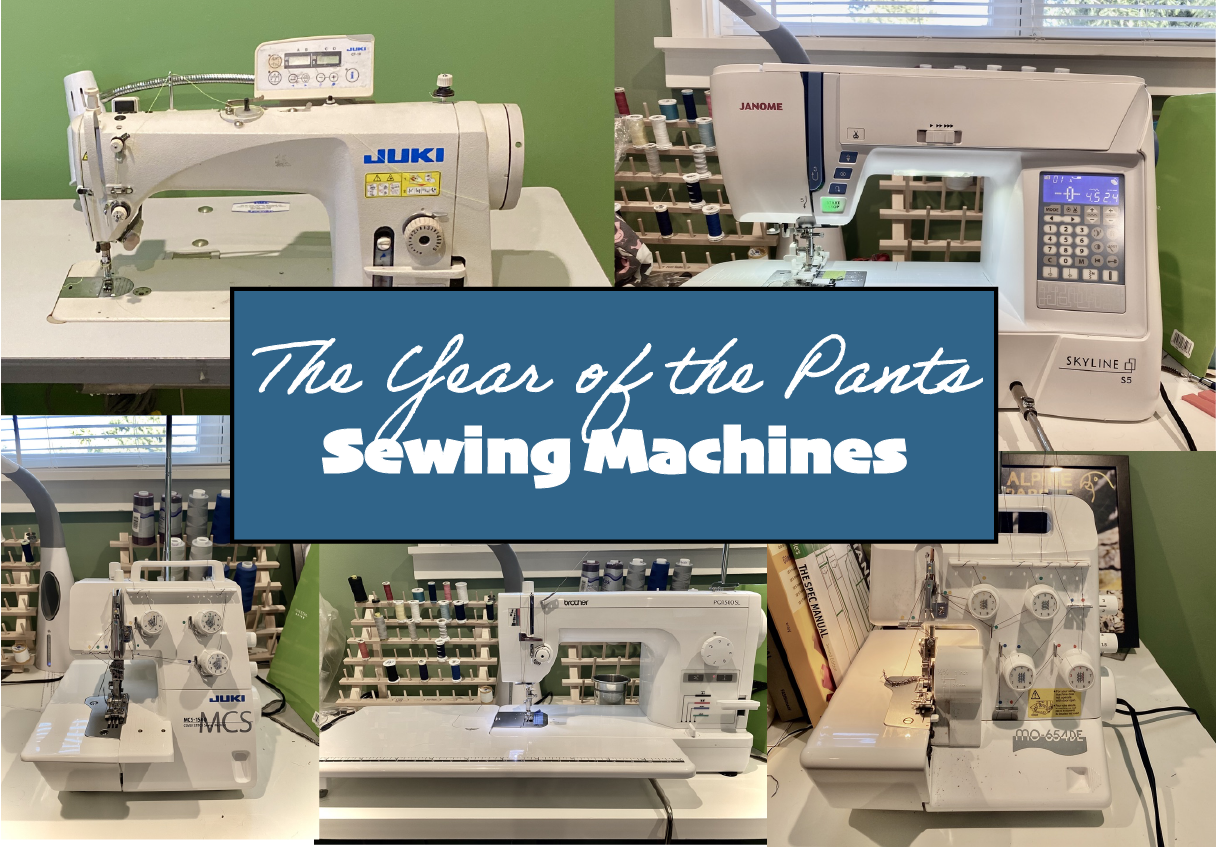
I've gotten some questions on social media about what sewing machines I use. Since I promised an overview of sewing machines in a previous post, here is that post!
Sewing, in my opinion, is one of the best parts of the apparel-making process. It's the means by which everything (from fabric to zippers) finally comes together into a fully-formed garment.
Before choosing a sewing machine, it's important to understand what kind of sewing will be done. For the purposes of this post, let's consider two categories of apparel sewing: non-stretch and stretch.
Non-stretch
When working with non-stretch elements (non-stretch fabric, zippers, etc), the key to a good seam is even, consistent stitches. This is usually achieved with a straight stitch. Most modern sewing machines use a method called lockstitch, which joins two threads on opposite sides of the fabric to make the even thread, like this:

The top thread is driven through the fabric via needle; the bottom thread is caught up via a bobbin.
Non-stretch elements include woven fabrics, zippers, facings, and more. A lockstitch is generally okay with stretch wovens (e.g. a woven fabric with lycra/elastane embedded, like stretch denim), but if there's too much stretch, then the stitches can pop when the fabric stretches out.
Stretch
Stretch elements generally include knit fabrics (e.g. t-shirt jersey), though the machines used for stretch materials can also be used on wovens, especially fabric that easily unravels (like loosely woven cotton gauze).
As described in the non-stretch section, lockstitch is suboptimal for fabric with a lot of stretch, as the stitches can pop. As such, it's important to have a machine that creates stitches that can stretch with the fabric.
One is called an overlocker (a serger in US home sewing), which uses 3-5 threads to create loops around the fabric, like so:

Another is called a coverstitch, which is generally only used for hemming or top stitching. It also uses loops to prevent stitch popping:

Coverstitch front and back
So many machines, so little space (and money)
While all of these machines (lockstitch, overlocker, coverstitch) all exist as individual machines, it's not particularly cost-effective for every home sewing enthusiast to own them all. Thankfully, most machines meant for home use offer a decent compromise.
A standard home machine has at least a straight stitch and a zigzag stitch. The straight stitch obviously covers the lockstitch use case. The zigzag can be used as a joining stitch for stretch fabrics: the diagonal nature of the stitch itself enables fabric to move without popping stitches. It can also be used like an overlocker, looping around the edges. For the coverstitch replacement, a twin needle can be used (with an extra spool of thread) to achieve a similar result.
For those who work with knits a lot, however (e.g. those who love making their own t-shirts), I highly recommend getting a serger and coverstitch - having specific machines that are great at doing their one thing (and well!) is a total game changer.
Back to #yotp
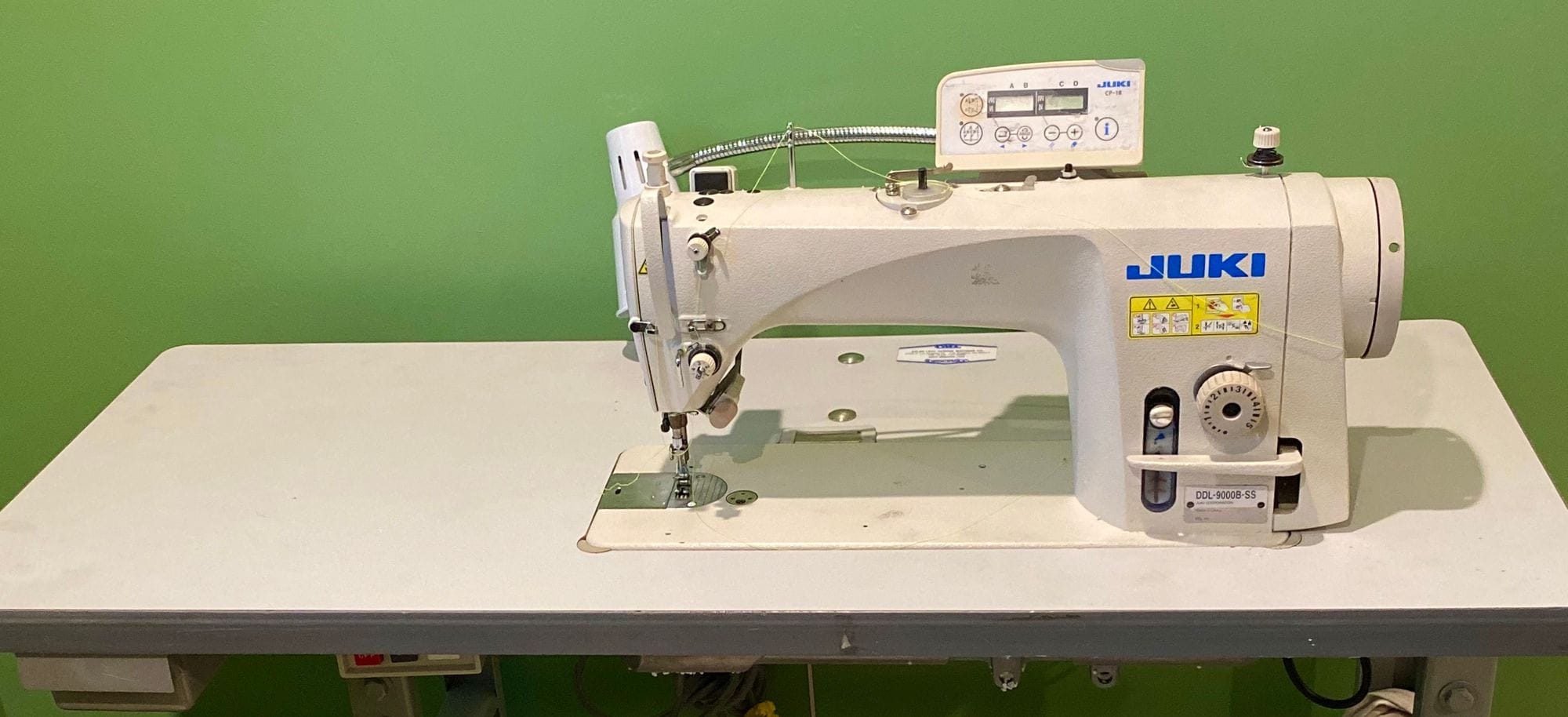
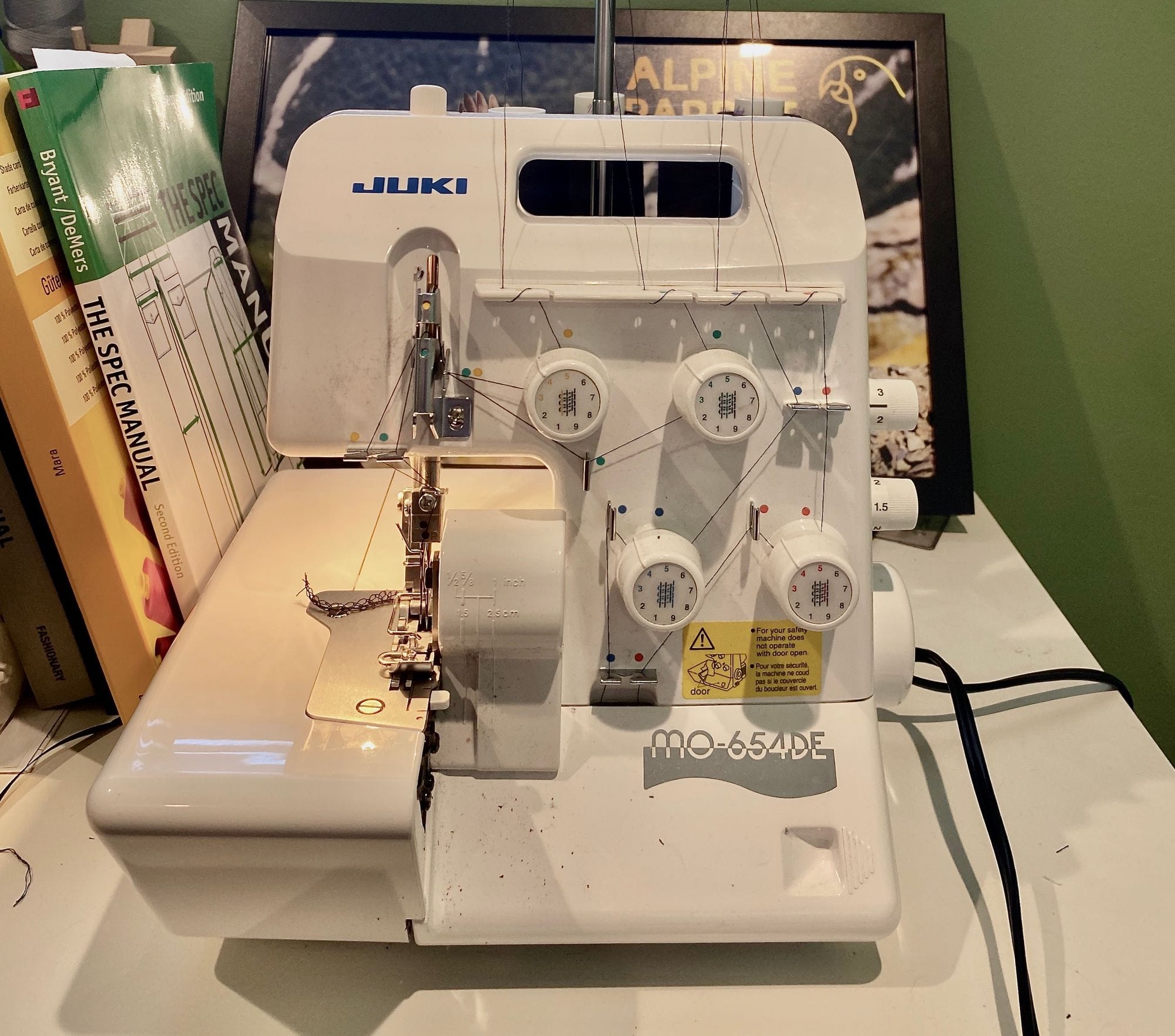
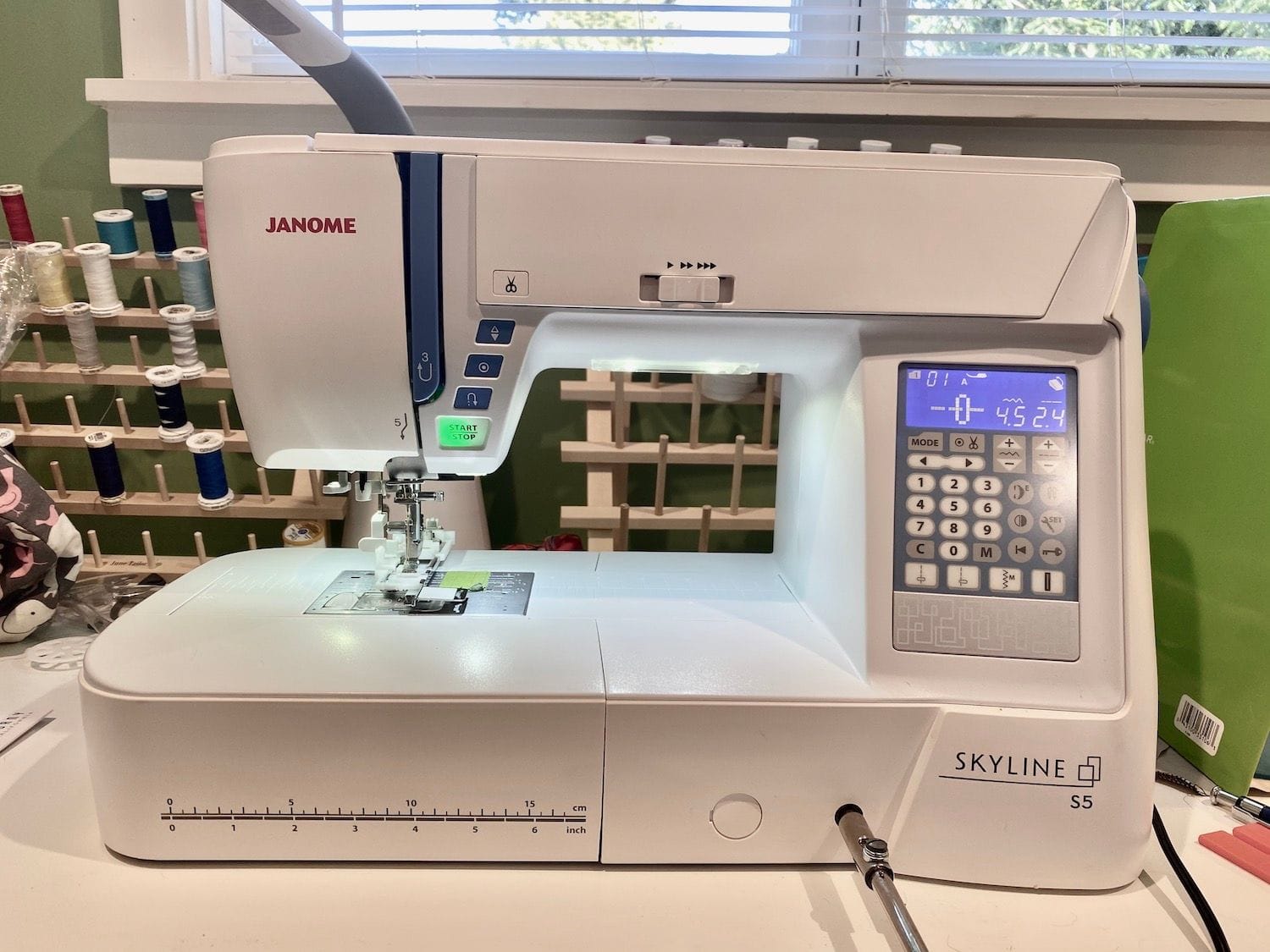
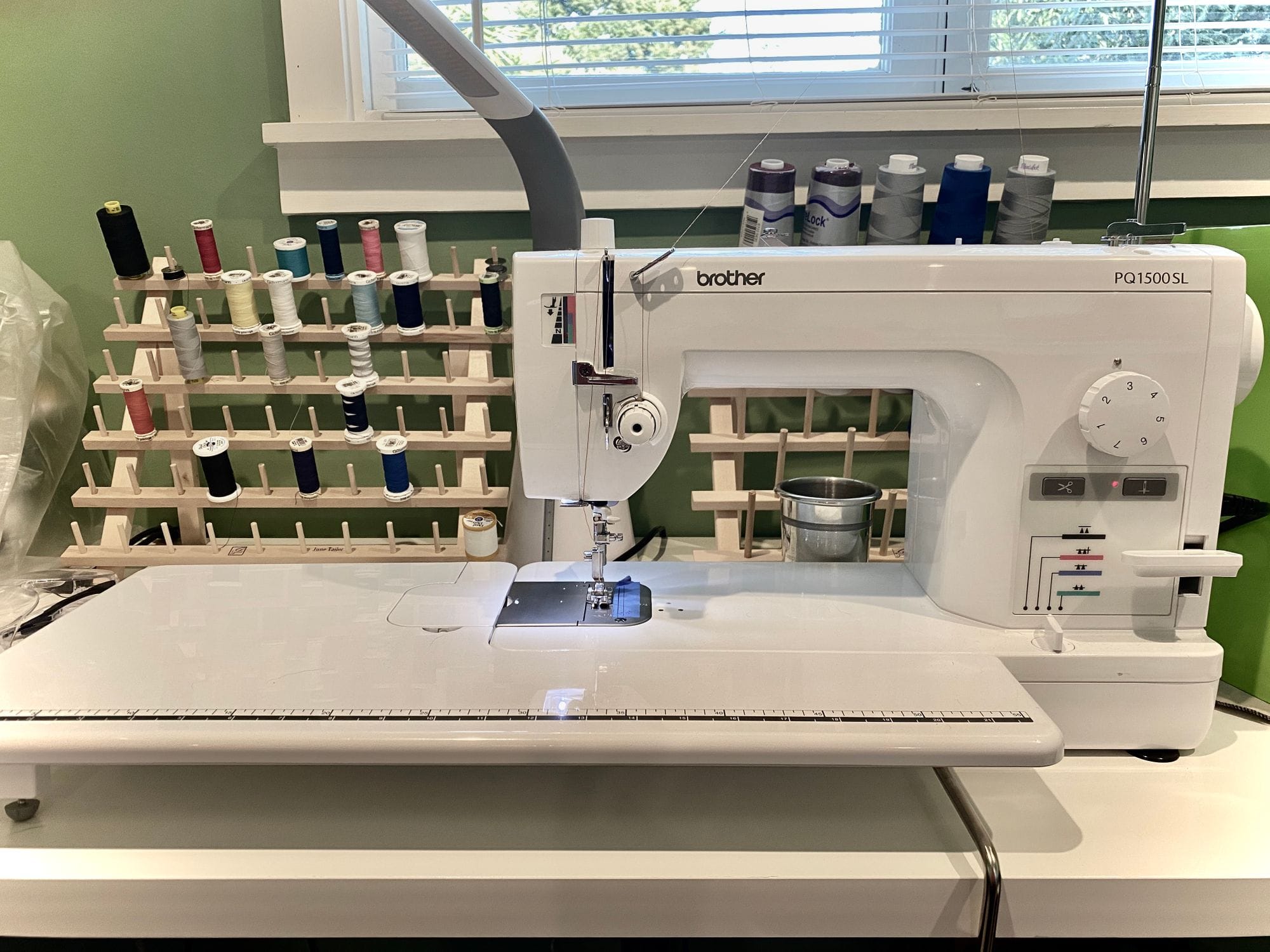
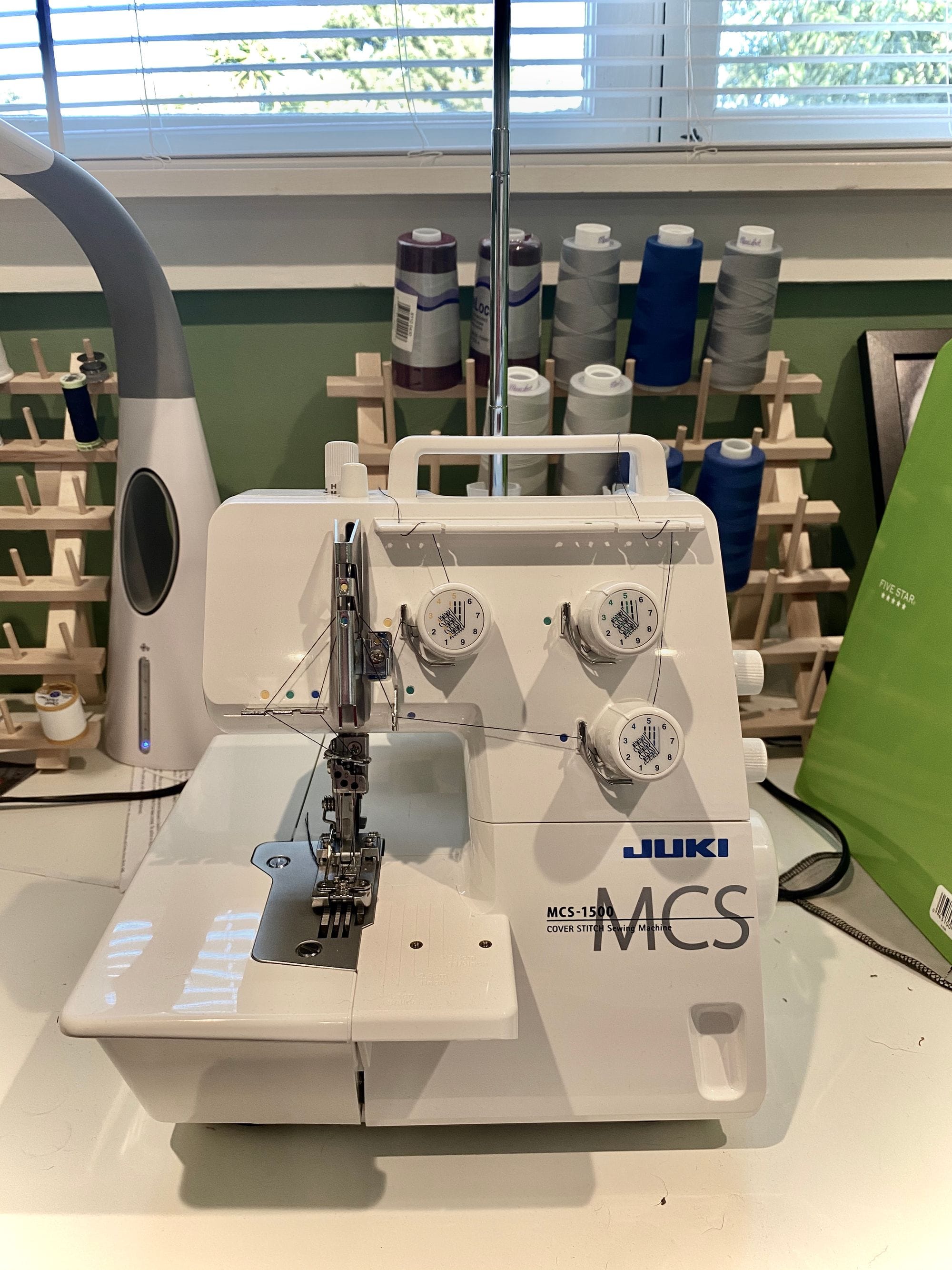
Clockwise, starting from the top left: Juki 9000-B industrial lockstitch, Janome MO-654DE serger, Janome Skyline S5 home sewing machine, Juki MCS-1500 coverstitch, Brother PQ1500SL straight stitch.
For my hiking pants prototypes, I have been using my own industrial lockstitch machine (a Juki 9000-B), my home serger (a Juki MO-654DE), and my home sewing machine (a Janome Skyline S5). I use the serger to finish the edges so that the fabric doesn't unravel everywhere, the lockstitch for joining all the seams and doing the topstitching, and the home sewing machine for tackling bartacks and buttonholes. If I should ever decide to do the topstitching in a different color, I'll probably pull out my table-top straight stitch machine (a Brother PQ1500SL), as switching between two machines is far quicker than swapping out thread on an individual machine! If I'm feeling extra frisky, I may just try out my coverstitch (a Juki MCS-1500)... but we'll see about that 😉
I am incredibly thankful for the incredible privilege I have for not only being able to afford all of these machines, but also to have my own sewing space in which I can store and use them all! I recognize that not everyone has this kind of access and opportunity, which is why I wanted to emphasize that most home sewing machines are more than enough!
What questions do you have about sewing machines? Put 'em in the comments for others to see!
